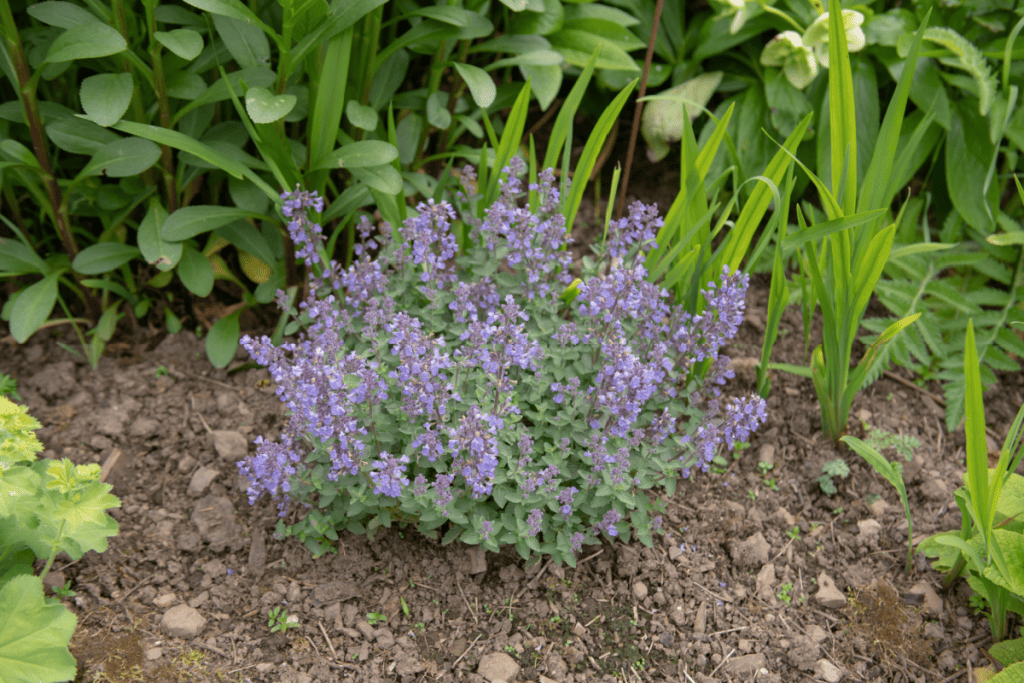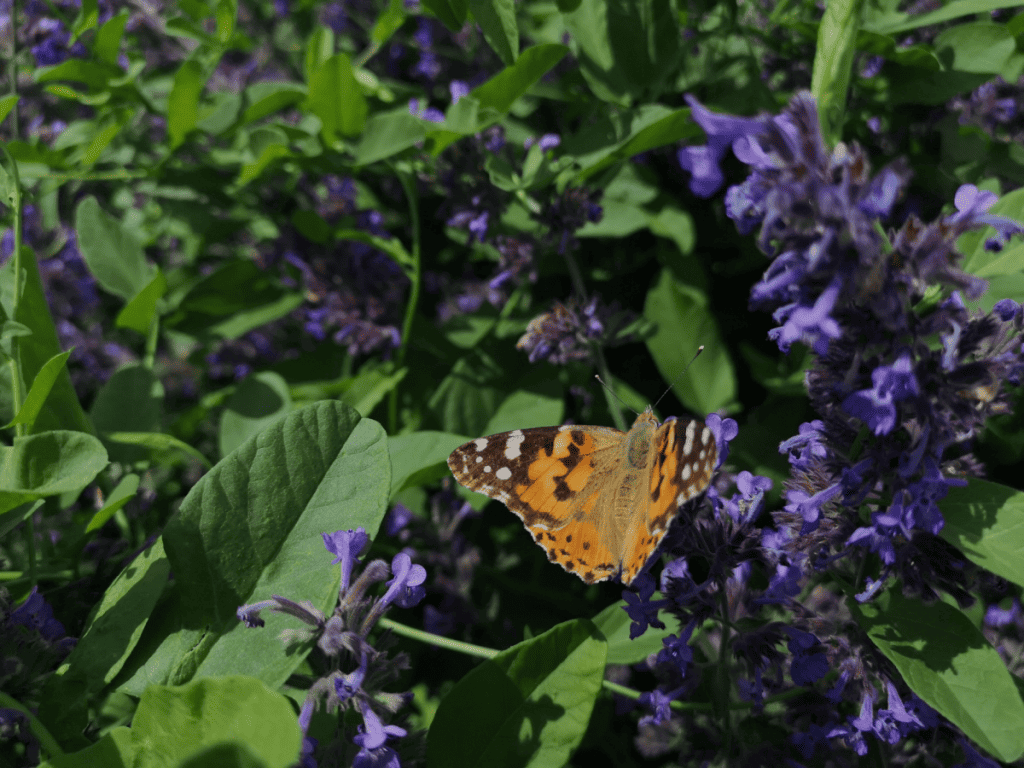Dream of pampering your cat with homegrown catnip? Let's turn that dream into a reality.
Picture your kitty's pure joy in discovering fresh, vibrant catnip leaves in your backyard. It's a cat's paradise!
Welcome to our guide. We're sharing the secrets to growing strong, bountiful catnip plants.
And the best part? You don't need a green thumb to succeed.
Trust us when we say it's easier than you imagine.
Stay with us, and we'll guide you in transforming your garden into the ultimate catnip haven for your furry friend.
Catnip: A Journey From Humble Herb To Feline Favorite
Originating from Europe, catnip isn't a new phenomenon. Its journey began as a herbal remedy and tea ingredient.
Its popularity soared through trade routes, spreading globally.
Today, it adorns gardens worldwide, and cats can't resist it!
Catnip's story is fascinating, from a simple herb to a beloved cat treat. Now, you're part of its continuing tale.
Cultivate it, share it with your cat, and keep the tradition alive.

The Dual Perks of Growing Catnip
Not only do our feline friends go head over heels for it, but many gardeners also favor catnip for its dual purpose.
Catnip attracts a variety of insects and beautifies your garden.
What's more? Catnip is resilient. It's a low-maintenance plant that needs little watering, even surviving in drought conditions.
But give it plenty of sunshine, and it'll truly thrive.
Cultivating Catnip: Your Comprehensive Guide
Ready to transform your garden into a catnip oasis? Let's get started! Here's your step-by-step guide to growing lush catnip:
Step 1: Prepare the Soil
Start with the right foundation: the soil. Catnip thrives best in well-draining soil, ideally with a pH between 6.1 and 7.8.
You can use a soil test kit to check your soil's pH level. If your soil is too acidic or too alkaline, amend it with lime or sulfur, respectively.
Don't forget nutrients! Add a balanced, slow-release fertilizer or compost into the soil before planting. This provides essential nutrients that will help your catnip grow healthily.
Step 2: Plant the Seeds
Planting the seeds correctly is key. Space them properly - at least 18 inches apart. If your garden allows, extend this to 24 inches.
This gives each plant enough room to grow without competition for resources.
Seeds need to be just beneath the surface, about 1/8 to 1/4 inch deep. After sowing, water gently. Keep the soil moist, but be careful not to overwater.
Step 3: Pruning for Growth
Prune regularly for a healthier plant. Cut the flower buds and stems as they show up. Pruning encourages fuller growth and can help keep your catnip bushy and vibrant.
Pruning isn't just about shaping your plant. It also helps in controlling pests and diseases. Always remove dead or diseased parts to keep the rest of the plant healthy.
Step 4: Catnip and Cats - Timing is Everything
It might be tempting to let your cat enjoy the fresh catnip right away. But patience pays off. Wait until your harvest is plentiful before introducing your furry friend to their new treat.
Allow your catnip to mature and establish itself. Young plants can be delicate. An overly enthusiastic cat might damage them. So, hold off until you're satisfied with your harvest.
With these steps in hand, you're well on your way to creating a catnip haven.
Catnip Defense: Protecting Your Garden
Are you worried about neighboring cats descending upon your freshly planted catnip? It's a common concern, and we're here to help.
First off, you might consider a chicken-wire fence. Not just any fence though - a loose one. It's simple to set up and highly effective. Arrange it around your garden's perimeter.
Why chicken wire, you ask? Cats generally don't like to climb unstable structures. So, this loose structure can be a great deterrent. Plus, it's low-cost and easy to install.
The height of the fence is crucial too. Aim for about three feet. This is typically enough to deter most cats - unless, of course, your furry friend is a high-jumping athlete!
Another strategy involves plant placement. If you have larger, non-catnip plants, consider planting catnip among them. These larger plants can serve as a natural barrier, helping to hide and protect your catnip.
You could also use scent deterrents. Some gardeners have had success with natural, non-toxic repellents, such as citrus peels or coffee grounds, which some cats dislike.
Remember, always research to ensure any repellent is safe for cats and other wildlife.
By protecting your catnip effectively, you ensure the best for both your garden and your furry friend.
Perfecting Your Catnip Care: Key Growth Factors
Want a thriving catnip plant? It's all about the right environment. Here's a closer look:
Sunlight: Sunshine is your catnip's best friend. Catnip plants love full sun to partial shade. Aim for at least six hours of sunlight each day. Remember, the more sun, the more potent your catnip will be.
Temperature: Catnip prefers warmth. Keep the temperature range between 55 and 85 degrees Fahrenheit. Extreme heat or cold may stress your plant. If it's particularly hot, consider providing some shade. In freezing temperatures, bring your catnip inside if possible.
Humidity: Catnip doesn't fancy much moisture. It enjoys a dry to average humidity level. Be wary of overwatering and ensure your soil drains well. Too much water can lead to root rot or fungus, both of which can devastate your plant.
Soil: We've touched on this before, but it's worth repeating. Good, fertile soil is key to your catnip's success. It should drain well but still retain some moisture. Aim for a pH between 6.1 and 7.8 for the best results.
Nutrients: Like all plants, catnip needs nutrients to grow. A balanced, slow-release fertilizer can provide the nutrients your catnip needs to thrive. Consider testing your soil to determine if any nutrients are lacking.
Keep these conditions in mind, and you're sure to create a catnip paradise your kitty will adore. Happy nurturing!

Navigating Catnip Growing Troubles: Tips for a Healthy Plant
Cultivating catnip is mostly a joyride. But like all gardening adventures, you may hit a few speed bumps. Let's gear up to tackle them.
Beware of Pests:
Some bugs have a soft spot for catnip. Aphids and spider mites may visit your plants. They are tiny, but they can cause significant damage.
Inspect your plants often, especially the undersides of leaves. If you spot any, use a natural insecticide or a blast of water to dislodge them.
Dodge Diseases:
Fungal infections are the usual suspects when it comes to catnip diseases. They love moisture. Make sure your catnip isn't sitting in soggy soil or getting drenched by overwatering.
If your catnip looks sickly and the soil is moist, a fungal infection might be the culprit. Treat it with a suitable fungicide.
Control the Spread:
Catnip is a perennial and can be invasive. It loves to grow and will spread if left unchecked. Regular pruning helps keep it under control. If it's still too aggressive, consider growing it in a container.
Cats, the Biggest Challenge:
Your biggest catnip fan might be the largest hurdle. Cats love fresh catnip and may be tempted to roll on, chew, or otherwise destroy your young plants.
Keep your cat at bay until your catnip is mature enough to withstand the feline affection.
Remember, a problem spotted early is a problem half-solved. Stay observant, respond swiftly, and you'll maintain a flourishing, cat-friendly garden. Happy problem-solving, green thumbs!
Catnip: Fresh, Dried, and Everything In-Between
Congratulations! You've got a batch of homegrown catnip. Now, let's talk about how to serve it up for your kitty's enjoyment.
Fresh from the Garden:
Cats adore fresh catnip. The leaves and stems are packed with that tantalizing scent they can't resist.
Simply snip a few pieces off your mature plant and let your feline friend revel in the natural delight.
The Drying Route:
Maybe you want to store some for later? Drying catnip is easy. Tie your harvested stems into small bunches and hang them upside down in a cool, dark place.
In about a week or two, your catnip will be crisp and dry. Crumble the leaves and flowers and store them in an airtight container.
The Whole Plant is a Go:
Wondering about any off-limits parts? Rest easy. Your entire catnip plant is cat-friendly. The leaves, flowers, and stems - all are safe for cats to enjoy.
However, remember the golden rule: moderation. Too much catnip can lead to a mildly upset kitty tummy. So, whether you're serving it fresh or dried, be sure to keep the portions sensible.
Catnip Diversity: From Common to Camphor
Did you know there's more than just one type of catnip? That's right!
This plant is as diverse as it is enticing to our feline friends. Let's explore some popular catnip varieties.
Common Catnip (Nepeta cataria): This is your classic variety. With heart-shaped, toothed leaves and white or lilac flowers, it's the most recognizable. It's known for sending kitties into a euphoric frenzy.
Lemon Catnip (Nepeta cataria citriodora): This variety adds a citrusy twist to the usual catnip scent. Lemon catnip plants have beautiful white flowers and a zesty aroma that some cats absolutely adore.
Camphor Catnip (Nepeta camphorata): As the name suggests, this type has a scent reminiscent of camphor.
This variant is a hit-or-miss among cats; some enjoy the unusual scent, while others may not be as enthusiastic.
Greek Catnip (Nepeta parnassica): Considered more potent than other types, Greek Catnip has a reputation for driving felines wild.
It's distinguished by its gray-green leaves and intense aroma.
With so many variants to choose from, you can create a catnip garden that caters to your pet's unique preferences.
Final Thoughts: Embrace the Joy of Growing Catnip
Growing catnip is more than just a hobby. It's a journey of connection with your feline companion, filled with bonding moments that are truly precious.
As you and your feline friend step into this exciting venture, we hope you find nothing but joy, laughter, and contentment.
May your garden flourish, and your cat purr in delight. Happy gardening! 🌿🎉
You might also like:
How Long Does Catnip Last And Does It Ever Expire?
How Long Should You Let Your Cat Play With Catnip?
Some elements on this page may have been created by our team using advanced AI to provide you with top-notch cat inspired ideas. Read more about our AI Content Policy.
